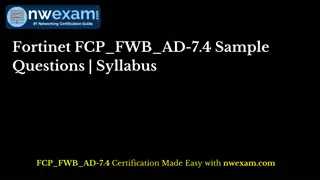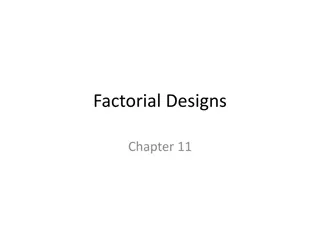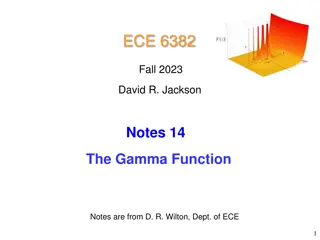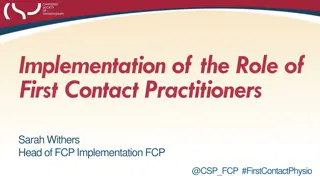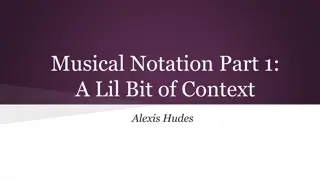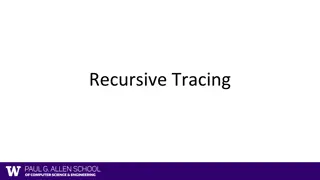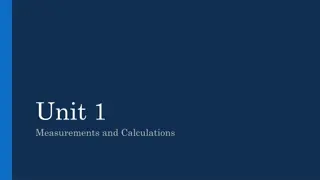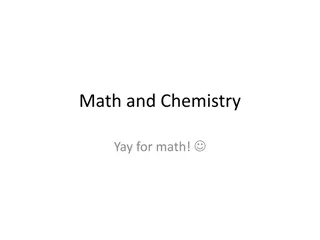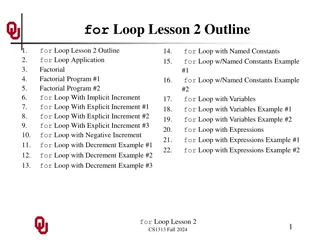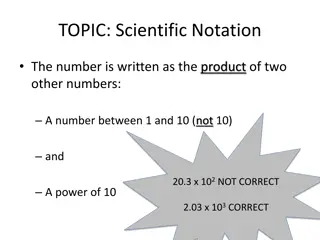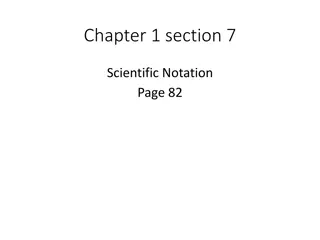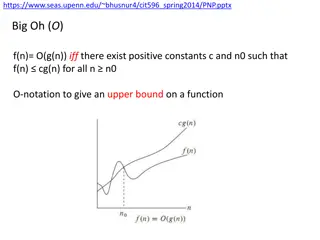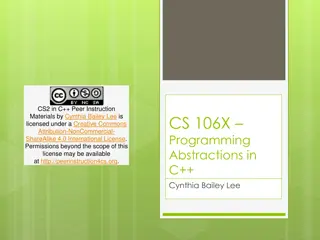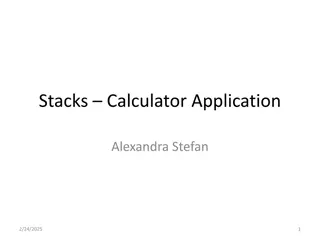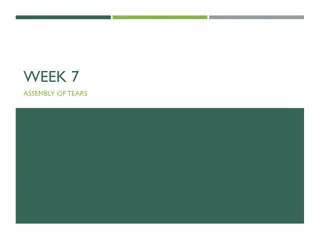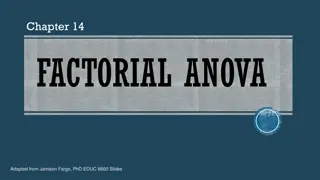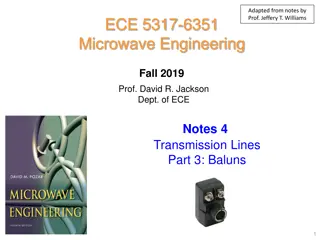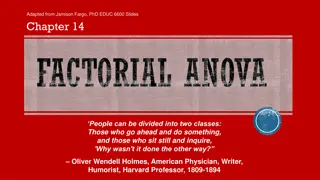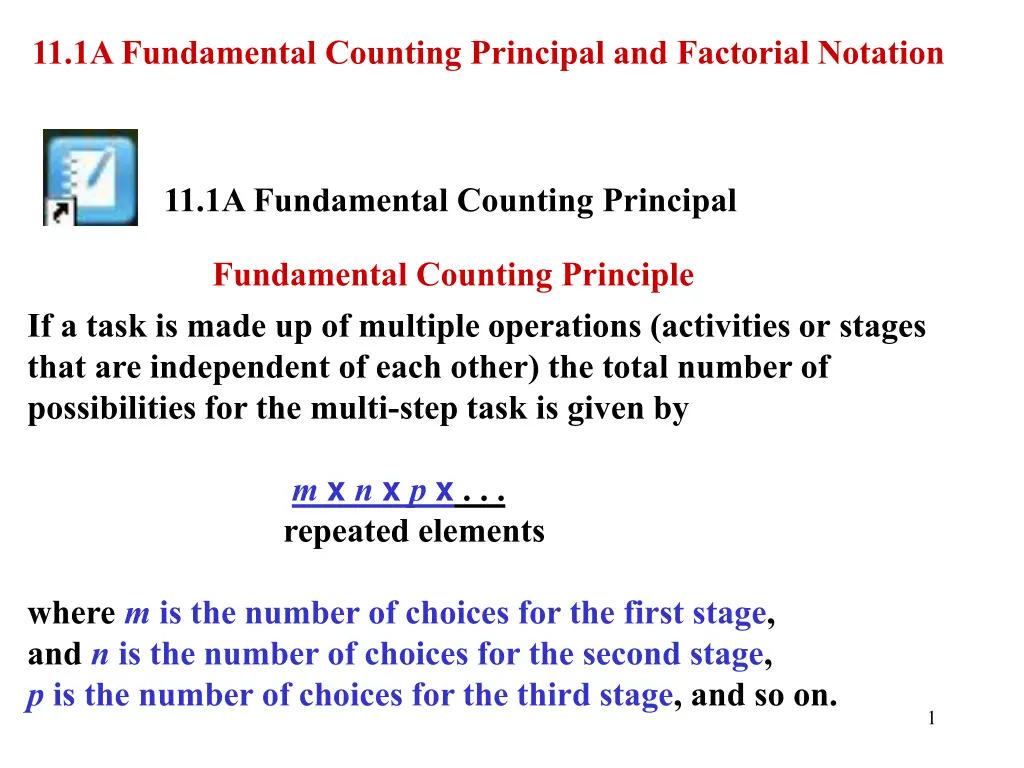
Fundamental Counting Principles and Factorials
Understand the fundamental counting principle and factorial notation in mathematics, including permutations, combinations, and arrangements of items. Learn how to apply these principles to solve various counting problems efficiently. Explore the concept of factorial notation and its significance in representing the product of consecutive natural numbers.
Download Presentation

Please find below an Image/Link to download the presentation.
The content on the website is provided AS IS for your information and personal use only. It may not be sold, licensed, or shared on other websites without obtaining consent from the author. If you encounter any issues during the download, it is possible that the publisher has removed the file from their server.
You are allowed to download the files provided on this website for personal or commercial use, subject to the condition that they are used lawfully. All files are the property of their respective owners.
The content on the website is provided AS IS for your information and personal use only. It may not be sold, licensed, or shared on other websites without obtaining consent from the author.
E N D
Presentation Transcript
11.1A Fundamental Counting Principal and Factorial Notation 11.1A Fundamental Counting Principal 11.1A Fundamental Counting Principal Fundamental Counting Principle If a task is made up of multiple operations (activities or stages that are independent of each other) the total number of possibilities for the multi-step task is given by mxnxpx . . . repeated elements where m is the number of choices for the first stage, and n is the number of choices for the second stage, p is the number of choices for the third stage, and so on. 1
A permutation determines the number of ways to list or arrange items. Items may be identical or may repeat. Many permutations question may be computed by using FCP. A combination determines the number of ways to group items. Items must be unique and may not be repeated. Math30-1 2
1. Colleen has six different blouses, four unique skirts and four sweaters of different colours. How many different outfits can she choose from, assuming that she wears three items at once? _____ x ______ x ______ Blouses Skirts Sweaters 6 4 4 = 96 ways 1 Colleen can select an outfit 96 different ways. 2. The final score in a soccer game is 5 to 4 for team A. How many different half-time scores are possible? _____ x ______ Team A (0 - 5) There are 30 different possible half-time scores. 6 5 Team B (0 - 4) 1 Math30-1 3
Applying the Fundamental Counting Principle 3. How many different arrangements can be made from the letters of the word CAT, if no letter can be used more than once. ____ x ____ x ____ 3 2 1 1st2nd3rd There are 6 three-letter arrangements. 1 4. If all the letters in the word FACETIOUS are used with no letters repeated, how many different arrangements can be made? ___ x ___ x ___ x ___ x ___ x ___ x ___ x ___ x ___ 9 8 7 6 2 1 4 3 5 1 There are 362 880 arrangements. What if there were 26 letters? Math30-1 4
The product of consecutive natural numbers, in decreasing order down to the number one, can be represented using factorial notation: 3 x 2 x 1 = 3! Read as three factorial . 1! = 1 2! = 2 x 1= 2 3! = 3 x 2 x 1= 6 4! = 4 x 3 x 2 x 1= 24 5! = 5 x 4 x 3 x 2 x 1= 120 6! = 6 x 5 x 4 x 3 x 2 x 1= 720 7! = 7 x 6 x 5 x 4 x 3 x 2 x 1= 5040 8! = 8 x 7 x 6 x 5 x 4 x 3 x 2 x 1= 40320 Why does factorial notation stop at 1 not 0? What is the value of 0! ? All objects must be chosen until the set is completely exhausted. Math30-1 5
3! = 3 x (3 - 1) x (3 - 2) = 3 x 2 x 1 5! = 5 x (5 1) x (5 2) x (5 - 3) x (5 - 4) = 5 x 4 x 3 x 2 x 1 By definition, for a natural number n: n! = n(n - 1)(n - 2)(n - 3) x . . . x x 3 x 2 x 1 Math30-1 6
Applying the Fundamental Counting Principle 5. How many different ways can 5 friends line up to board a bus? 5! 1 6. a) How many ways can 9 different books be placed on a single shelf? 9! 1 b) How many ways can any three of 9 different books be placed on a single shelf? ____ x ____ x ____ 9 8 7 1st2nd3rd 1 Math30-1 7
Applying the Fundamental Counting Principle with Restrictions 7. How many three-letter arrangements can be made from the letters of the word CERTAIN, if no letter can be used more than once and each is made up of a vowel between two consonants. ____ x ____ x ____ 4 3 3 1st2nd3rd There are 36 three-letter arrangements. 1 Must be a vowel: E, A, and I Must be a consonant and can not be the same as the first letter Must be a consonant: C, R, T, and N 8. If all the letters in the word PHONE are used, how many different 5-letter arrangements can be made beginning with a vowel? ____ x ____ x ____ x ____ x ____ 2 4 3 2 1 There are 48 arrangements. 2 4! 1 Must be a vowel Math30-1 8
9. You are given a multiple choice test with 10 questions. There are four answers to each question. How many ways can you complete the test? ____ x ____x ____ x ____ x ____ x ____ x ____ x ____ x ____ x ____ 4 4 4 4 4 4 4 4 4 4 1 1 2 3 4 5 6 7 8 9 10 You can complete the test 410 or 1 048 576 ways. 10. How many different 3-letter arrangements begin with the letter D and end with the letter G if repetition is not allowed? ____ x ____x ____ 1 24 1 1 There are 24 arrangements. 1 2 3 Math30-1 9
Calculations with Factorial Notation = =n(n 1)(n 2) ... 3 2 1 (n 1)(n 2) ... 3 2 1 = =n(n 1)! (n 1)! n! (n 1)! = n ! 3)! n ( ( )( ) ( 1) 2 3)! 3 ! n n n n n = n ( ( ( ) ) ( )( )( ( n ) + + 1 ! 1 ! 1 1 ! n n n n n = ) 1 ! ( )( ) 1 = + n n Math 30-1 10
Page 524 1, 9, 12, 13, 14, Math30-1 11
7. How many four-digit numerals are there with no repeated digits? _____ x ______ x ______ x _____ 9 9 1st 2nd can not be a zero zero, but can not be the same as the first 8 7 = 4536 The number of four-digits numerals would be 4536. 3rd 4th three digits have been used two digits have been used can be a 3 4 0 2 5 7 1 6 9 8 Math30-1 12
8. How many odd four-digit numerals have no repeated digits. _____ x ______ x ______ x _____ 8 8 1st 2nd can not be a zero or the same as the last digit 7 3rd three digits have been used 5 = 2240 The number of odd four-digit numerals would be 2240. 4th must be odd: 1,3,5,7, or 9 two digits have been used 9. Using any letter from the alphabet, how many four-letter arrangements are possible if repeats are allowed? _____ x ______ x ______ x _____ 26 26 26 1st 2nd 3rd use any of the 26 letters of the alphabet Math30-1 26 4th = 456 976 The number of four-letter arrangements would be 456 976. repetition is allowed 13
12. How many even four-digit numerals have no repeated digits. There are two cases which must be considered when solving this problem: zero as the last digit and zero not the last digit. _____ x ______ x ______ x _____ 8 8 1st 2nd can not be a zero or the same as the last digit 7 3rd 4 = 1792 4th must be even: 2, 4, 6, or 8 three digits have been used two digits have been used OR The number of even four-digit would be 1792 + 504 = 2296. _____ x ______ x ______ x _____ 9 8 1st 2nd can not be a zero have been used 1 7 = 504 3rd three digits have been used 4th must be a zero two digits Math30-1 14

